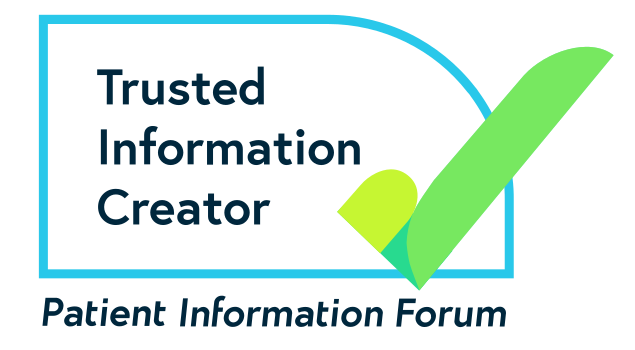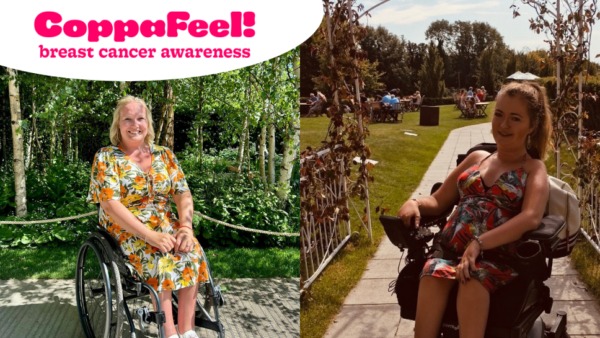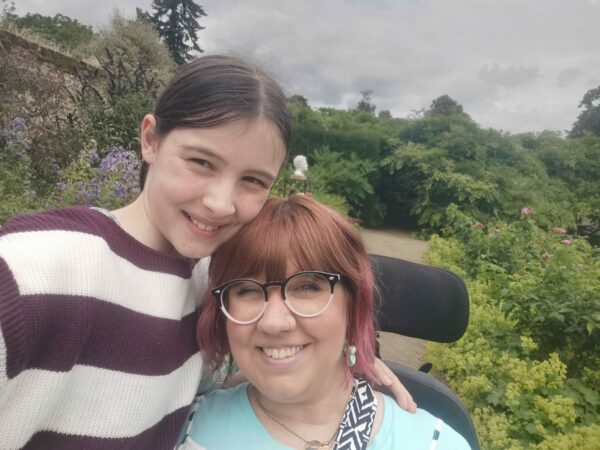Our condition-specific alert card provide crucial information for emergency healthcare professionals treating patients with spinal muscular atrophy (SMA) types 1, 2, and 3.
Spinal muscular atrophy (SMA)
Spinal muscular atrophy (SMA) is a genetic condition that affects the motor neurons, causing progressive muscle weakness and wasting (atrophy). SMA is also called 5q SMA. This is because, in most cases, SMA is caused by a change in the SMN1 gene located on chromosome 5 (5q). 5q SMA has traditionally been classified into type 1, 2, 3, and 4, based on when symptoms appear and how severe they are. Type 0 is a rare and very severe form with symptoms developing before birth. SMA can be diagnosed through genetic testing in pre-symptomatic stages.
Treatments are available for pre-symptomatic cases and SMA types 1, 2, and 3, if people meet the eligibility criteria. These treatments are most effective if given before muscle weakness sets in; they can slow the progression of muscle weakness and may improve strength and motor function.
SMA type 1
Symptoms of SMA type 1 typically appear within a child’s first six months. This type is the most common and severe form of SMA. Babies and children with SMA type 1:
- Present as a ‘floppy baby’ due to low muscle tone and severe muscle weakness.
- May be unable to raise their head because of weak neck muscles.
- Are unable to sit without support because of weak core muscles.
- May have difficulty moving, breathing, and swallowing.
- Are at higher risk of respiratory issues and chest infections.
While many children with SMA type 1 have typical learning and thinking abilities and are alert and responsive, some may experience cognitive impairment and developmental delay.
Without medical intervention, symptoms progress quickly, with life expectancy estimated at less than two years. However, improved standards of care and new treatments are helping to extend life expectancy and improve quality of life for these children.
SMA type 2
Symptoms of SMA type 2 typically appear between the ages of 6 and 18 months. Generally, the earlier the onset, the more severe the condition. People with SMA type 2 may:
- Be able to sit independently but not be able to walk.
- Have muscle weakness that affects both arms and legs, with the legs often weaker.
- Be prone to scoliosis.
- Experience twitching or tremors in the tongue or hands.
- Have breathing problems that may worsen during infections.
Progression of SMA type 2 can vary. While it may affect life expectancy in some cases, improvements in care and new treatments mean that many people are now living well into adulthood and enjoying a good quality of life.
SMA type 3
Symptoms of SMA type 3 typically appear from 18 months to early adulthood. People with SMA type 3 may:
- Be able to stand and walk independently at first, though they may find walking, balancing, and getting up from a seated position difficult.
- Experience progressive muscle weakness, mainly in the legs, which may eventually limit mobility.
- Have a lower risk of respiratory problems compared to earlier-onset types, though these can still occur.
If untreated, gradual loss of mobility and increased weakness are common; however, with adaptive support and therapy, many people with SMA type 3 are able to maintain independence for a significant amount of time. Life expectancy is generally considered to be unaffected.
SMA type 4
Symptoms of SMA type 4 typically appear in adulthood and tend to be milder. People with SMA type 4:
- Experience gradual muscle weakness in the arms and legs, affecting mobility and daily tasks over time.
- May feel tired and have aching muscles, cramps, or numbness.
- Rarely have issues with swallowing or breathing.
Progression is typically slow, and life expectancy is unaffected. Symptoms can be managed well with therapy and support.
It’s important not to confuse SMA type 4 with the progressive muscular atrophy form of motor neurone disease (MND). MND tends to get worse quickly and can be life-threatening, while SMA type 4 progresses slowly and people usually have a normal life expectancy.
Rarer forms of SMA
There are rarer forms of SMA caused by different genetic changes, which result in different patterns of symptoms and progression. These rarer forms are not part of 5q SMA, and don’t fall into the typical classifications of types 1 to 4, but they still affect the motor neurons. Some rarer forms include SMA with respiratory distress type 1 (SMARD1), X-Linked SMA, spinal and bulbar muscular atrophy (SBMA, or Kennedy’s disease), and spinal muscular atrophy with lower extremity dominance (SMALED).
Genetic changes
5q SMA is caused by changes in the SMN1 gene, which stands for Survival Motor Neuron 1. This gene makes the SMN protein essential for motor neurons, which are cells that control muscle movement. Parts of the SMN1 gene are missing in 96 percent of people with 5q SMA. This means not enough SMN protein is made. Without it, motor neurons in the spinal cord break down and this disrupts the delivery of signals from the brain to the muscles. This then causes muscles to weaken and waste over time – known as muscle atrophy.
The number of copies of another gene, nearly identical to SMN1, SMN2, can affect how severe the SMA is. This happens because SMN2 can produce some functional SMN protein, but it does not make up for the faulty SMN1 gene. SMN2 is sometimes referred to as the SMA ‘back-up gene’. People who have SMA with more SMN2 copies usually have milder symptoms, while those with fewer copies often have a more severe form. Genetic testing can identify the change in the SMN1 gene and the number of copies of the SMN2 gene.
Inheritance
5q SMA is inherited in an autosomal recessive pattern. This means that a child needs to inherit two copies of the changed SMN1 gene – one from each parent – to develop the condition. If a person inherits one normal copy and one changed copy, they are considered a carrier and do not typically show any symptoms of SMA.
In some cases, a new change may occur in the SMN1 gene that was not present in either parent. This is rare, but can occur in about 2 percent of cases.
Genetic counselling and support are recommended for families with a diagnosis or a family history of the condition. Testing can help identify carriers and provide information on the risks for future pregnancies.
For more information, see our inheritance and genetics page.
The process of diagnosing SMA typically begins when clinical signs, such as muscle weakness and other characteristic symptoms, are noticed. These signs vary depending on the age of onset and the SMA type.
If SMA is suspected at any age, genetic testing is performed using a blood sample. This test checks for missing parts of the SMN1 gene and can confirm the diagnosis. The number of SMN2 copies is also assessed, which can help predict how the condition might progress and can guide treatment. Additional tests like muscle biopsies, electromyography or nerve conduction studies are usually not required.
For more information, see our diagnosis page.
In several countries, newborn screening programmes test for SMA by checking for changes in the SMN gene. These programmes aim to identify conditions early, often before symptoms appear, so treatment can begin as soon as possible. However, SMA is not currently included in the UK newborn screening programme. We are part of the UK SMA Newborn Screening Alliance working to change this.
Access to a healthcare team
SMA is a complex condition, so having a multidisciplinary team of specialists is important. They will work together and are usually led by a neurologist who coordinates care. A collaborative approach helps monitor the progression of SMA, ensures access to treatments, and allows for proactive care.
Depending on the symptoms, the team may include health professionals who specialise in:
- muscle strength and movement – physiotherapist
- the lungs – respiratory consultant
- bowel and stomach – gastroenterologist
- nutrition and feeding- dietician
- bones and joints – orthopaedic specialist
- the heart – cardiologist
The ‘International Standards of Care for SMA’ (2017) offer essential guidelines that support the healthcare team in delivering coordinated care, improving outcomes and quality of life. The management described here is based on this document. A more detailed guide can be found here.
We are a partner in SMA Care UK, which is currently developing updated UK standards of care to reflect how treatments have changed the management needs of people with SMA in the UK.
Treatments
Treatment for SMA has advanced significantly, and therapies are available in the UK that can manage symptoms, slow progression, and improve quality of life. The right treatment depends on factors like the type of SMA, age at diagnosis, and overall health. All treatments have eligibility criteria that must be met. While these treatments can improve symptoms and extend life expectancy, ongoing management with a multidisciplinary team remains essential.
We play a key role in ensuring access to new treatments, often acting as a formal Patient Expert. For more information on available treatments, visit our access to treatments page.
Exercise and physiotherapy
Physiotherapy is crucial for managing SMA and should focus on maintaining range of movement, muscle strength, and overall function. A specialist physiotherapist can develop a tailored programme, which may include stretching exercises, strengthening, and mobility training to help maintain independence as much as possible. Early intervention can help slow down the development of contractures and muscle shortening. The programme will need to be adjusted accordingly at check-ups. Children and adults may require support and encouragement from caregivers to perform physiotherapy safely and regularly. High-impact or high-resistance exercises should be avoided to prevent muscle damage, and regular rest breaks are essential to prevent fatigue.
Respiratory management
The muscle weakness caused by SMA can affect the respiratory muscles and lead to breathing problems, and this can be severe for those with earlier onset forms of SMA. Breathing should be regularly checked, and proactive respiratory management is crucial for these people so that the appropriate support can be provided. The annual flu vaccination and pneumococcal vaccine are recommended for everyone with SMA.
For those who cannot sit independently, breathing problems can become severe, with common complications like chest infections due to weak coughing ability. Early intervention is key to preventing these issues. Cough assist machines and chest physiotherapy should be used regularly to help clear mucus. A specialist should regularly check whether non-invasive ventilation (NIV) is needed to support breathing during sleep. NIV works by providing two levels of air pressure through a mask, helping the person to breathe more easily. Other options like CPAP are generally not recommended, as they don’t help remove carbon dioxide effectively.
If NIV is not possible, invasive ventilation might be considered, which involves surgically inserting a tube into the windpipe for long-term support. These decisions should be made after discussing all options with the healthcare team, ensuring the best outcome for the person.
People who can sit independently typically experience fewer breathing issues, but it’s still important to check lung function regularly. Breathing tests and sleep studies should be carried out to identify any breathing problems, especially if symptoms such as poor sleep quality, morning headaches, or daytime sleepiness appear. If necessary, cough assist devices, and NIV should be used to improve breathing. People with SMA who can walk are unlikely to experience respiratory weakness that requires intervention, but this should still be checked during appointments.
Orthopaedic management
Orthopaedic management focuses on managing and preventing issues with the bones and joints like spinal deformities, joint contractures, and fractures. With improvements in treatment, more people with SMA are living longer and having better overall function, so spine management is becoming increasingly important.
Everyone with SMA should be regularly assessed to monitor any changes in their condition. For those who cannot sit independently, rigid braces may help improve posture while sitting, as long as they do not affect breathing. Regular checks of the spine are important, as scoliosis (curvature of the spine) is common and tends to worsen with age. For those who can sit independently, braces can help manage mild curves, but surgery may be needed for more severe cases. Surgery can improve posture, breathing, and quality of life. There are two types of spinal surgery – for younger children, growing rods may be used to allow the spine to continue growing, while older children or adults may need surgery to stabilise the spine and improve overall function.
Hip displacement is a common orthopaedic feature, particularly in non-ambulatory patients, and should be monitored.
Joint contractures, which occur due to limited movement and muscle imbalance, can cause pain and affect function. Early treatment includes physiotherapy to maintain joint flexibility, but surgery may be needed if the contractures become severe. Bone fractures are more common in SMA because of weaker bones. Treatment for fractures focuses on stabilising them and preventing long periods of immobility, which could worsen muscle weakness and bone loss.
Nutrition, growth, and bone health
For everyone with SMA, it’s important to regularly check growth. It may be necessary to see a speech and language therapist to check swallowing function, and having a dietitian involved can make sure diet is adequate. The dietitian will monitor not just weight, but also fluid intake and the balance of nutrients, particularly calcium and vitamin D for bone health. It’s also important to talk about digestive symptoms, like constipation, reflux, or difficulty with stomach emptying.
For those who cannot sit independently, it’s essential to check swallowing ability to prevent issues like aspiration (food or liquid going into the lungs) and respiratory infections. This should be done shortly after diagnosis and monitored regularly. Good nutrition should focus on weight and growth, with a diet tailored an individual person’s needs by a dietitian. If swallowing or feeding is difficult, a feeding tube (also called a gastrostomy tube or PEG) may be needed temporarily, with a permanent one considered later.
For those who can sit independently, eating can also be difficult. Regular assessments should check swallowing and chewing abilities, as well as track weight and body composition. These people are at risk of becoming overweight because of reduced physical activity, which can lead to health problems like diabetes and high blood pressure. If feeding becomes difficult, a feeding tube may be used for extra nutrition, and the diet should be adjusted to meet a person’s needs.
People with SMA who can walk rarely have swallowing issues, but they may still have concerns about nutrition and weight that need dietitian input.
Other organs and systems
A small number of people with SMA may show signs of problem in other organs.
In severely affected infants with SMA, some may have issues with the structure of their heart and heart rate which requires treatment. It’s recommended that infants with severe SMA (usually those with breathing difficulties from birth) are assessed for heart problems. People with SMA types 2 and 3 are unlikely to have heart issues, and heart checks should only be done if symptoms develop.
There have been reports of problems with the pancreas of people with SMA, such as diabetes, and issues with how the body processes glucose. It’s recommended that everyone with SMA have their blood sugar levels checked, especially when unwell. Some people with SMA may also experience mitochondrial dysfunction, which affects how cells produce energy.
Anaesthesia stops a person feeling pain during a procedure or surgery. There is an increased risk of complications when using general anaesthesia in people with SMA. If surgery is needed, the medical team must be aware of the SMA diagnosis, and a full preoperative assessment should be carried out. This may include a sleep study and checking heart function if there are any pre-existing heart issues. Challenges related to airway management, such as jaw tightness, limited neck mobility, or difficultly positioning the person should be anticipated.
Use of neuromuscular blocking drugs, particularly the drug suxamethonium, should be avoided. The use of local anaesthesia or regional pain relief may be considered to reduce complications. Blood oxygen and carbon dioxide levels must be closely monitored during and after anaesthesia. Postoperative care may include pain relief and respiratory support (e.g. non-invasive ventilation) depending on the person’s condition.

Author: Muscular Dystrophy UK
Reviewers: Dr Channa Hewamadduma and Dr Maria Vanegas
Last reviewed: April 2025
Next review due: April 2028
Spinal muscular atrophy webinar (2024)
On Thursday 15 February 2024 we held a webinar on spinal muscular atrophy. Watch to learn about the latest research, as well as tips and advice on living well with spinal muscular atrophy.

We are here for you
Webinars, Information Days, and support groups for our muscle wasting community. Our life-changing support is here for you.
Advice for living with or caring for someone with a muscle wasting condition.


